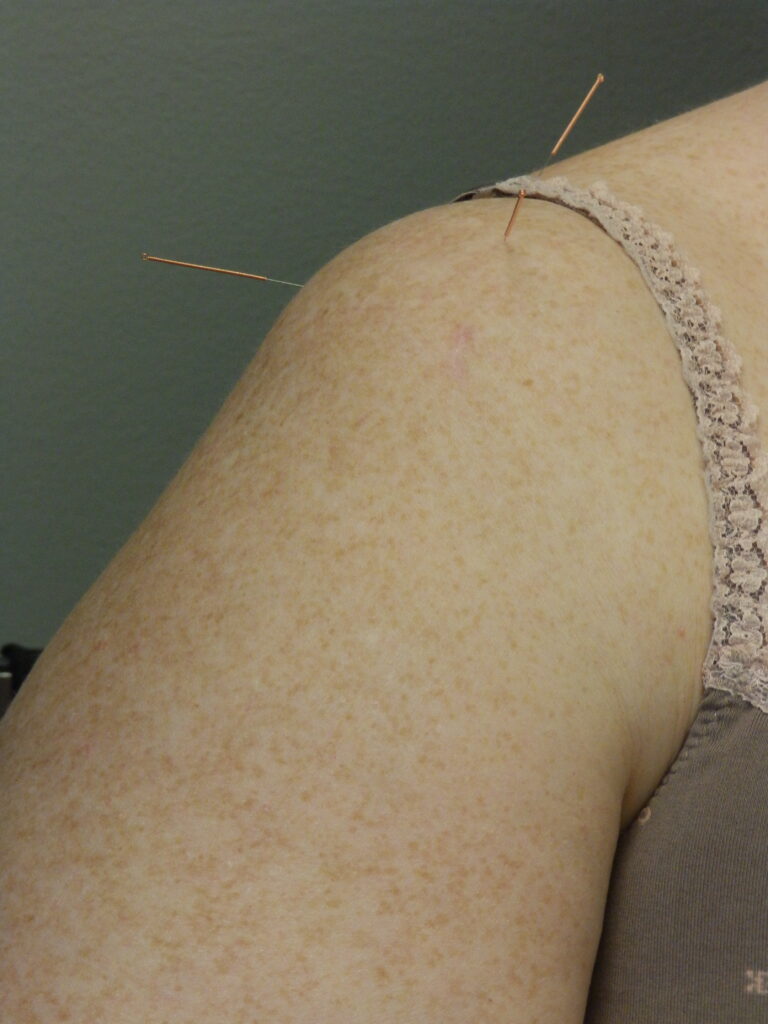I Have a Frozen Shoulder? But Spring Just Started!
Our shoulders are ‘ball and socket’ joints which are surrounded by a structure called a joint capsule. This capsule is like “Saran-Wrap” that holds the fluid in the joint and can help to stabilize the shoulder. With frozen shoulder, this capsule becomes inflamed (“capsulitis”), shrinks, and becomes stuck to the shoulder joint itself. As a result, this can severely limit the range of motion of the shoulder.


The progression of frozen shoulder can be broken down into three stages:
- Freezing Stage
This is the initial stage of the condition and when most people start to notice changes and seek treatment. It is often characterized by intense pain with movement, especially fast movements, but only mild restrictions in range of motion.
- Frozen Stage
It is in this middle stage where you will see the most restriction in your shoulder range of motion. The pain does not worsen, and may even decrease slightly, but the shoulder will feel very stiff and be difficult to move.
- Thawing Stage
This is the final stage of the condition. The pain in the shoulder lessens and the range of motion will gradually begin to improve.
What is causing my frozen shoulder?
Frozen shoulder usually occurs one of two ways: 1) insidiously (for no known reason); or 2) as a progression of another injury.
- Insidious Onset
There is limited research and understanding as to why frozen shoulder occurs. One theory currently being investigated is that it may be related to changing hormone levels as we reach middle age. This can affect both sexes, but it does tend to be more common in women (up to 70% of people with frozen shoulder are female).
Another theory states that it can be more likely to develop in individuals with certain diseases. These can include:
- Diabetes (10-20% of people with diabetes develop frozen shoulder)
- Hyper- or hypothyroidism
- Cardiovascular disease
- Tuberculosis
- Parkinson’s disease.
- Progression of Another Injury
A more common cause of frozen shoulder is immobility of the joint that can result from another injury. A lot of times when we have shoulder pain or an injury, we tend to stop using it and restrict its movement to avoid causing further pain. While rest is often required to help with healing, prolonged immobilization can increase the risk of developing frozen shoulder. This prolonged immobility may be a result of:
- Rotator cuff injury
- Broken arm
- Stroke
- Surgical recovery
It’s important that you see a physiotherapist when you start to experience shoulder pain. Your physiotherapist can provide you with some gentle exercises that will help to maintain your mobility, while minimizing pain, thus reducing the risk of frozen shoulder.



Can my frozen shoulder be treated?
If you do nothing to treat it, a frozen shoulder can recover on its own, but this process can take 2-5 years. There are, however, other treatment options that can reduce pain and help shorten this recovery time.
X-ray or Ultrasound Guided Cortisone Injections
If it’s caught at the right time, a series of cortisone injections into the joint space within the capsule can help to decrease the inflammation and stretch out the capsule in order to decrease pain and help increase range of motion. This should be completed by an Interventional Radiologist who will use either an x-ray or ultrasound imaging machine to help make sure that the injection goes into the right spot. It is often encouraged that these injections are followed by physiotherapy treatment so that the therapist can perform manual techniques to further stretch the joint and provide appropriate exercises to maintain the increase in mobility.
Physiotherapy
The physiotherapists at EPA can provide certain modalities to help with controlling pain. These may include:
- Acupuncture
- Intramuscular stimulation (IMS)/dry needling
- Therapeutic ultrasound
- Interferential current (IFC) or TENS
Your physiotherapist can also provide specific manual therapy techniques and individualized exercises to help improve your mobility and speed up your recovery time.
If you suspect that you have a frozen shoulder, give one of our clinics a call and book an appointment with one of our many qualified therapists.
You can also visit http://myshoulderpain.ca/ for more information about shoulder treatment options.




